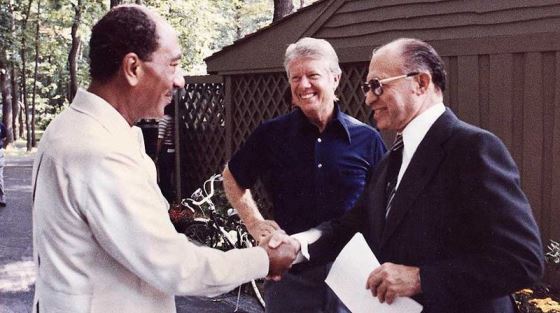1978: Sort-of Swinging Seventies? Incoming Freshmen’s Attitudes on Sex, Living Together, and Divorce

Jimmy Carter was still president; one of his signal accomplishments that year was the 13-day Camp David summit resulting in a historic peace treaty between Israel and Egypt. The Blizzard of 1978 (Northeast Edition) paralyzed New England and the Northeast, killing approximately 100 people and injuring over 4,000 more; the other Blizzard of 1978 (Ohio Valley and Great Lakes Edition) paralyzed Illinois, Kentucky, Michigan, Ohio, parts of Wisconsin, and parts of Pennsylvania, killing over 70 people). In technology news, Sony introduced the first portable stereo: the Walkman. Top movies were The Deer Hunter, Midnight Express, and Coming Home. One of the biggest U.S. higher education news items was the Regents of the University of California v. Bakke decision, where the Supreme Court held that race could be considered as a factor in ensuring diversity in college admissions, but that student quotas were impermissible.
To shed light on incoming college students’ opinions of the rapidly changing world around them—only five years after Roe v. Wade (1973) made abortion legal across the U.S. and when only some states did not have no-fault divorce laws allowing divorce without proof of wrongdoing such as physical or psychological abuse or abandonment—the CIRP Freshman Survey asked a number of questions about attitudes toward sex, living together before marriage, and divorce. As can be seen by the results, young men and women often had different perspectives.
Respondents were split almost evenly overall on the question “If two people like each other, it’s all right for them to have sex even if they’ve known each other for only a very short time”; 47.2% agreed either strongly or somewhat, while 52.9 disagreed either strongly or somewhat. However, when disaggregated by gender, 24.9% of men agreed strongly versus only 8.2% of women; conversely, 38.4% of women disagreed strongly while 14.8% of men disagreed strongly. Part of what may have played a role in this split is the issue of contraception and abortion availability in 1978 (e.g., abortion services being unavailable for 26% of the women estimated to need them in 1978).
The same gender differences appeared across self-reported political views. For instance, 32.9% of males who identified as far right politically agreed strongly with the question as opposed to 13.1% of female students; on the opposite end of the political spectrum, 49.1% of males who identified as far left politically agreed strongly versus 22.4% of females who identified as far left. Strong disagreement by men ranged from 9.1% (liberal) to 22.1% (far right). Strong disagreement by women ranged from 25.1% (liberal) to 56.6% (conservative).
When asked their opinion of the statement “A couple should live together for some time before deciding to get married,” 43.8% of all incoming college students agreed either strongly or somewhat, though only 9.5% of that total agreed strongly; 56.2% disagreed either strongly or somewhat, with 24.9% of that total disagreeing strongly. A total of 49.9% of male students agreed somewhat or strongly; 38.2% of female students agreed somewhat or strongly.
Gender differences, unsurprisingly, also were prominent in students’ agreement or disagreement with the statement “The activities of married women are best confined to the home and family.” 32.7% of male students overall agreed either somewhat or strongly with the statement; 28.2% disagreed strongly, and 39.1% (the most common answer) disagreed somewhat. By contrast, only 17.5% of female students agreed either somewhat or strongly with the statement; 61.5% of female students disagreed strongly, with another 21% disagreeing somewhat. Agreement or disagreement by gender with the view “Divorce laws should be liberalized” was less stark than the other views examined here. For instance, 50.6% of male students disagreed either strongly or somewhat versus 56% of female students. Only 13.1% of male students and 10.1% of female students answered “agree strongly.”
Overall, 46.6% of students agreed either strongly or somewhat that divorce laws should be liberalized. To set this in historical context, according to the National Center for Health Statistics, the 1978 U.S. divorce rate continued along the upward trend it had been following since 1963. The divorce rate increased by 3.6% from 1977, with the estimated 1,130,000 divorces granted in 1978 representing a rate of 5.2 per 1,000 population.
This set of questions and their answers illustrates different worldviews of men and women students about various facets of relationships and sexuality in the changing culture of the late 1970s. While today’s generation may have coined the phrase “hookup culture,” incoming freshmen had pronounced opinions on the matter decades before today’s freshmen were even born.
Did You Know?: In 1978, 59.7% of incoming students agreed either somewhat or strongly that “A national health care plan is needed to cover everybody’s health care costs.”
27.1% of incoming students agreed either somewhat or strongly that “Colleges would be improved if organized sports were de-emphasized.”
67.6% of incoming students felt there was a very good chance they would find a job after graduation in the field in which they were trained in college.
